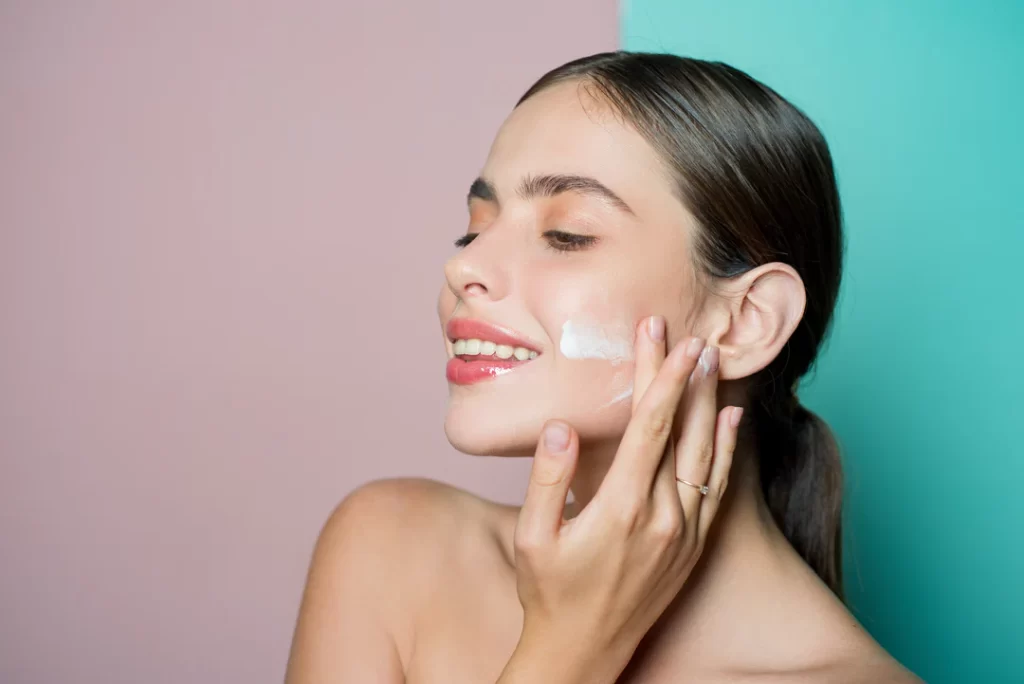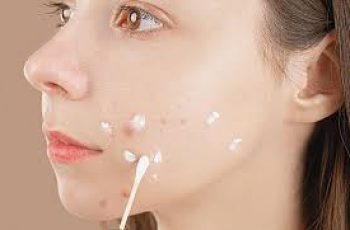
Can you Layer Vitamin C with Azelaic Acid?
You probably understand what vitamin C is already, but the lesser-known benefits of azelaic acid are often overlooked. In recent years there has been a surge in this clever, multi-functioning acid, often occurring in various formulas as the main active ingredient. Chances are you could already be benefiting from it without even realising.
So, let’s find out more together and see whether you can layer vitamin C with azelaic acid! Don’t forget if you have any skincare questions you can follow Procoal’s Instagram.
What is Azelaic Acid?
Found naturally occurring in grains such as barley and wheat, it has since been formulated synthetically making it stable and easy to be added into skincare products. Often mistaken as a member of the AHA and BHA family, azelaic acid is a class of medications known as dicarboxylic acids. Originally formulated into topical skincare products to help combat acne and rosacea. Rich in antibacterial properties with the ability to chemically exfoliate the skin, it can target build-up of dead skin cells, spots, blackheads, and other breakouts.
It also combats signs of hyperpigmentation, dark spots and post acne scarring all whilst remaining gentle enough to calm rosacea and redness to the skin with its impressive anti-inflammatory benefits. Wanting to find out more? Check out our Skin School post about azelaic acid for more information.
What is Vitamin C?
Not just in your morning orange juice, vitamin C is one of the most loved and used skincare ingredients. Packed with antioxidants you can combat daily exposure to free radicals, such as UV damage and pollution. With its potent ability to neutralise the damage you’ll find that vitamin C can combat fine lines and wrinkles as well as targeting dark spots and hyperpigmentation, leaving you with a healthy glow resulting in an even looking complexion. There is a fully dedicated blog post about the full benefits of vitamin C, so do check it out.
So, now you have had a refresher about the benefits of these two powerhouse ingredients, let’s dive right in and find out more about layering them together.
Can you layer vitamin C with azelaic acid?
The short answer is yes, both azelaic acid and vitamin C are packed with antioxidant and skin benefiting properties that help to promote an even complexion with fine lines and wrinkles notably reduced. I would advise using these ingredients with caution, especially if you have a skin type that is dry or prone to sensitivity.
It may take some time for your skin to become accustomed to layering both ingredients in your daily routine. To build your skin’s tolerance I suggest applying vitamin C during your morning routine and saving azelaic acid for the evening. This will ensure you reap the rewards whilst avoiding any unwanted reactions, irritation, or discomfort. There’s more about this topic on The Beauty Insiders Blog, so click here to find out more.
What can you layer with azelaic acid?
Luckily for us all azelaic acid is a relatively easy acid to add into our daily routines. You may even find that is versatile enough to team together with other active ingredients, including acids. Here are some examples of which ingredients you can layer with azelaic acid.
Azelaic Acid and Niacinamide
By teaming these two ingredients together you’ll find the overall look and health of the skin is improved. Inflammations are reduced, signs of congestion are improved and there is noticeable difference in post-acne scarring and dark spots. Both azelaic acid and niacinamide work on the outer surface of the skin, with niacinamide locking moisture into the protective barrier keeping it at its healthiest, fully functioning state.
Azelaic Acid and AHAs BHAs
Although it may feel that teaming azelaic acid and AHAs or BHAs would be a recipe for disaster but are in fact perfectly safe to use. Azelaic acid remains gentle enough to not disrupt the skin barrier or cause dryness. Having said that, it is best to keep an eye on the other, more potent acids you apply to the skin as overusing them can result in severe dryness, redness, and flare-up in acne. For an easy and effective routine alternate the days you use products containing AHAs, such as glycolic acid and BHAs, like salicylic acid.
Azelaic Acid and Vitamin C
Teaming these two potent ingredients together is a simple task. Both enriched in antioxidants they can complement each other and work at reviving the skin, repairing damage, and protecting the outer barrier on a daily basis. As I have already mentioned, to avoid any unwanted reactions it is best to alternate the times you use each ingredient in your regime.
There are three examples of the best ingredients you can layer with azelaic acid. Considering other popular skincare ingredients, I would suggest seeking the advice of a doctor, dermatologist or trained, medical professional before introducing anything new into your daily regime.
What’s better azelaic acid or vitamin C?
If I was forces to choose which skin ingredient is better between vitamin C and azelaic acid, I would say vitamin C. This is because between the two, vitamin C is naturally occurring on the skin. With both ingredients containing such an impressive array of skin benefits, it is perfectly safe to use them together. If both ingredients are new to your routine, I would suggest performing a patch test for 24 hours beforehand will prevent any irritation. To perform a patch test, apply a 10p size amount of your skincare product on the inside of your forearm and leave it overnight. If by the morning you have not experienced any flare-up or irritation, then you have the green light to apply it to your face. Can you layer acids and vitamin C? Yes, you can, but it can take some time to master the most effective method. Here are a couple of options you try. Option One: Use Vitamin C and AHAs/BHAs at different times This is the best option for those with an extremely dry and sensitive skin type. By applying the acids and vitamin C at different times will ensure you reap the rewards without the worry of causing irritation or disruption to the skin barrier. You will also find that applying these ingredients at different parts of the day allows you to regulate the pH level of the natural protective barrier. This is important as it will combat the risk of the skin surface becoming weakened and citable to damage because of exposure to free radicals. Option Two: Layering Vitamin C and AHAs/BHAs Together When used correctly, layering acids with vitamin C can be an effective duo. You must keep in mind however that building your skin’s tolerance will have an impact on how each ingredient delivers the best results. If you are wanting to find out more about what not to mix with vitamin C, check out the dedicated blog post. I hope that this has cleared up some confusion about whether you can layer vitamin C with azelaic acid. It won’t take long before you are amazed with the results you’ll see.
DQH Knowledge drop: In your 20s, your skin cell turnover decreases. (Cell turnover is a key component in keeping your skin youthful.) You know what else slows down? Your collagen production. Starting in your 20s, collagen decreases by about 1 percent per year. Should you want to prevent fine lines and wrinkles, start by eliminating behaviors that contribute to premature aging. “If it’s bad for you, it’s bad for your skin,” says dermatologist Michel Somenek.
“Cigarette smoking reduces blood flow to the skin and causes premature wrinkling and a dull skin texture. Making the repeated pursed motion to inhale can also cause smoker’s lines. Alcohol and recreational drugs are toxins for the skin that damage its cellular structure and DNA,” Somenek tells us. “The faster you eliminate vices while you are young, the better chance your skin and body have to recuperate.” Also, adopting an anti-aging routine in your 20s is key. After all, the best offense is a good defense. We spoke to Somenek and experts Joshua Ross and Audrey Kunin to find out more.
Keep reading for the best anti-aging products for your 20s, according to skincare professionals.
Sunscreen
“We all know that the sun is the number one cause of skin aging and starting the prevention in your 20s is very important,” Ross says. “The majority of your sun damage won’t start to appear until you’re in your 30s, so don’t wait until you see it surface or you’ll be behind the curve. Stay ahead of it with a good-quality zinc-based sunscreen worn daily.”
Farmacy Green Defense Daily Mineral Sunscreen
An invisible sunscreen with SPF 30, plus botanical extracts meant to protect skin with tons of antioxidants. Bonus: It’s clean and fine to use under makeup.
Bareminerals Complexion Rescue™ Tinted Moisturizer Broad Spectrum SPF 30
Although we recommend you use your SPF and moisturizer separately, we also understand moments when you don’t have time or energy for that extra step. For those times, this bareMinerals moisturizer is a great thing to have on hand.
Vitamin C Serum
“A great introduction to anti-aging is to start with a vitamin C serum in your morning skincare routine,” Ross says. “It’s a powerful antioxidant that will neutralize free radicals and brighten the skin.” He adds that it’s a great way to counteract the effects of the sun’s harmful rays, which, as previously mentioned, are among the biggest causes of premature aging.
Drunk Elephant C-Firma™ Vitamin C Day Serum
The Drunk Elephant C-Firma is a lightweight serum that promises to give skin a glow by combining the brightening powers of vitamin C with ferulic acid, l-ascorbic acid, and vitamin E. The included sodium hyaluronate is meant to replace hydration loss, so you shouldn’t have to deal with any irritation.
Sunday Riley C.E.O. Rapid Flash Brightening Serum
This potent serum is jam-packed with vitamin C (15 percent, to be exact), which means it’s a potential superstar at both brightening skin and dousing it in antioxidants.
Peptides
Using peptides on your skin has many benefits, says Somenek. “The skin barrier is what defends the body against pollution, UV rays, bacteria, and toxins. It can be damaged by several everyday factors. Using topical peptides aids in building a stronger barrier,” he says. “Peptides comprise elastic fibers, which are a type of protein. These fibers help to make skin appear taut and firm. Peptides can also help repair damaged skin, relieve inflammation, and even out skin tone. Some peptides can kill acne-causing bacteria that is common in 20-somethings.”
Kunin agrees, saying, “Peptides are an excellent entry point for supporting collagen.” She recommends looking for face and eye treatments that contain these collagen-boosting powerhouses.
Charlotte Tilbury Magic Eye Rescue Cream
This Charlotte Tilbury super-emollient eye cream has a base of coconut oil and shea butter (read: it’s incredibly hydrating). Botanicals plus peptides are meant to help reduce dark circles and boost collagen, respectively.
This creamy moisturizer serves up potent collagen-boosting peptides and pycnogenol, and antioxidant-rich vitamin C. “Instead of sitting on top of the skin, peptides penetrate the outer layer so they go deep. The ‘signals’ they send tell the cells to produce elastin and collagen, which are needed for youthful-looking skin,” explains Somenek.
At-Home Peel Pads
Remember that skin cell turnover fiasco we talked about earlier? One way to help support it is by exfoliating. “Exfoliation is important to help keep skin fresh and luminous,” Kunin says. She recommends using at-home peel pads as an easy and effective way to exfoliate.
“The goal in your 20s is to fight the slowing pace of cell turnover. It is wise to use products that gently exfoliate, yet still remove oil and other impurities. Products that have Alpha Hydroxy Acids (AHA) or Beta Hydroxy Acids (BHA) are a good choice.”
According to Somenek, you should only exfoliate two to three times a week. “People of all ages are guilty of over-exfoliating and that can be too much of a good thing,” he says.
Dermadoctor Kakadu C Intensive Vitamin C Peel Pad
A few swipes of this Derma Doctor powerful peel pad promise to leave your skin glowing and smooth, thanks to the seven (yes, seven) types of chemical exfoliants, including AHA and BHA. It also contains vitamin C via Kakadu plum extract for added brightening and antioxidant protection.
KEY INGREDIENTS Kakadu plum extract is sourced from the Kakadu plum, a fruit grown in northern Australia. It contains vitamin C, which restores the skin’s natural barrier, increases collagen production, and soothes irritation.
Dr. Dennis Gross Skincare Alpha Beta® Universal Daily Peel Pads
These are the gold standard of peel pads, with a cult following and over 900 five-star reviews on Sephora. They’re easy to use and contain a blend of anti-aging exfoliating acids.
Emollient Night Cream
“In your 20s, you need to start upping the hydration in your skincare routine. You may have been cautious of over-moisturizing because of acne in your teens, but as you enter your 20s, your skin transitions and becomes drier,” Ross says. “I recommend an emollient night cream added into your evening skincare regimen.”
“Twenty-somethings need to make sure that they are not using creams that will clog their pores and cause excess oil production,” says Somenek. Opt for non-comedogenic products.
Cerave Skin Renewing Night Cream
One great choice is the CeraVe Skin Renewing Night Cream, which is a non-comedogenic night cream that leaves skin soft and glowy. It combines the moisturizing powers of ceramides and hyaluronic acid.
RoC Retinol Correxion Max Hydration Creme
“The best night cream ingredients contain retinol, benzoyl peroxide, and/or salicylic acid or hyaluronic acid. The goal is to moisturize, yet remove excess oil,” says Somenek. This Roc Retinol Correxion cream fits the bill as it contains both hyaluronic acid and retinol so it promises to moisturize while also being non-comedogenic.


